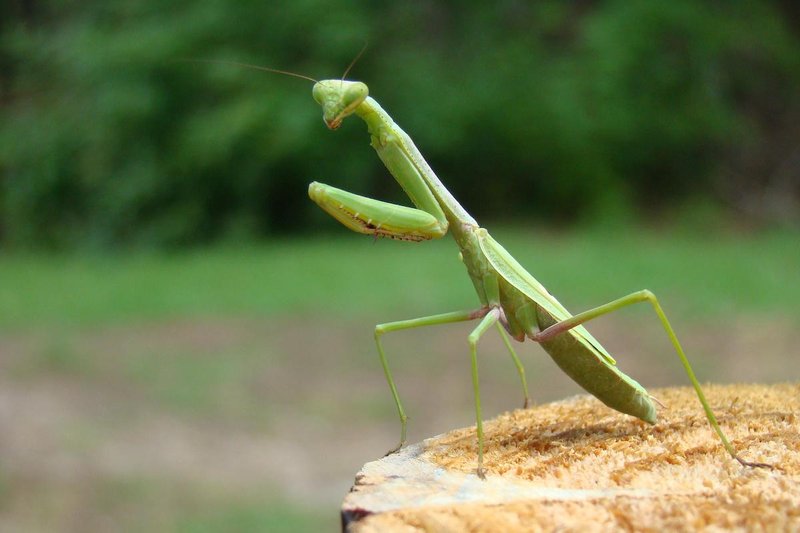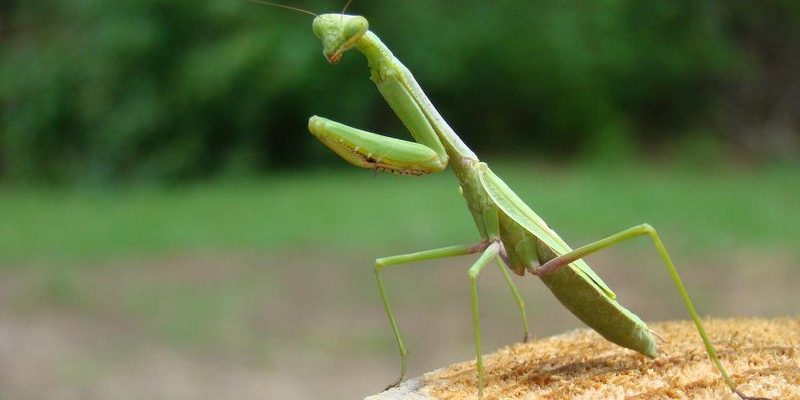
Praying mantises are more than just bizarre-looking insects; they’re masters of adaptation. These little hunters can be found on every continent except Antarctica. Imagine them as the stealthy ninjas of the insect world, expertly camouflaged and perfectly adapted to their surroundings. Armed with their unique hunting skills and ability to thrive in diverse habitats, praying mantises have captivated the attention of nature enthusiasts and researchers alike.
Whether you’re curious about how they blend into their environment or how they manage to survive in different climates, this article will provide a closer look at the habitats of praying mantises and their incredible adaptability.
Habitat Overview
Praying mantises are versatile insects that can be found in a variety of environments. You might find them hanging out in gardens, forests, grasslands, and even urban areas. They prefer places where they can easily ambush their prey, primarily sticking to environments rich in vegetation.
– Gardens: Many homeowners may have seen these intriguing insects in their gardens, where they help control pest populations. They can often be spotted on plants, blending in with their surroundings, thanks to their green or brown coloration.
– Forests: In wooded areas, mantises can be found on trees and shrubs. The leaves and branches provide excellent camouflage, allowing them to catch unsuspecting insects that wander too close.
– Grasslands: Open fields and grasslands are another popular spot for mantises. Here, they can remain hidden among tall grasses and wildflowers, waiting patiently for their next meal.
– Urban Areas: Believe it or not, mantises can thrive in cities too! They adapt well to urban gardens, parks, and even balconies, where they can find food and shelter amidst the concrete jungle.
Climate Preferences
When it comes to climate, praying mantises are adaptable creatures. They generally enjoy warm, humid environments, which help keep their bodies functioning at peak performance. In fact, most species flourish in temperatures ranging from 70°F to 90°F (21°C to 32°C).
During colder months, mantises have a unique survival strategy. Many species enter a state called diapause, which is kind of like hibernation for insects. They can remain in this state until the weather warms up again, ensuring they survive until spring when the food supply increases.
How They Adapt to Their Environment
Praying mantises have developed some incredible adaptations that help them thrive in various habitats. Let’s explore some of their most impressive survival strategies.
Camouflage
One of the mantis’s most remarkable adaptations is its ability to blend into its surroundings. This natural camouflage makes them nearly invisible to both predators and prey. Depending on their environment, they can adapt their coloration:
– Green backgrounds: In lush, green areas, mantises often display vibrant green hues.
– Brown surroundings: In dry or dead environments, they can take on a brownish color, allowing them to blend in seamlessly with dried leaves or tree bark.
This disguise is not just for show; it increases their chances of success when hunting. A well-camouflaged mantis can sit motionless, waiting for unsuspecting insects to pass by.
Hunting Techniques
Praying mantises are expert hunters, and their adaptations extend to their hunting techniques. They possess specialized forelegs, which they use to snare prey with lightning speed. Here’s how their hunting process typically works:
1. Patience is Key: Mantises often remain still for long periods, waiting for the right moment to strike.
2. Lightning Fast Strikes: When a potential meal comes within reach, the mantis can snap its forelegs out in a fraction of a second, catching its prey completely off guard.
3. Eating Habits: Once the mantis has captured its meal, it uses its sharp mouthparts to consume it. They aren’t picky eaters; they prey on various insects, including flies, crickets, and even other mantises!
Mating and Reproduction
While hunting skills are crucial for survival, reproduction is another area where praying mantises have adapted cleverly. Many species are known for their unique mating behaviors, which can be both fascinating and a bit gruesome.
– Courtship Rituals: During mating, the male usually performs a courtship ritual that may involve dancing or displaying his body to impress the female.
– Unusual Ending: In some species, the female may eat the male after or even during mating. This may sound harsh, but it provides the female with extra nutrients that can enhance her reproductive success.
By adapting to their environments and behaviors, praying mantises ensure their survival and the continuation of their species.
Challenges and Threats
While praying mantises are skilled at adapting to their environments, they still face various challenges and threats. Understanding these challenges can help us appreciate these creatures even more.
Predators
Despite being effective hunters, praying mantises have their own predators. Birds, frogs, and even larger insects can pose a threat to them. Their camouflage helps them avoid detection, but they must remain constantly vigilant to survive.
Habitat Loss
As urban development continues, natural habitats for praying mantises are shrinking. This loss of habitat puts pressure on their populations. Gardens and parks can still provide some refuge, but the diversity of insects in these areas may not be enough to support large mantis populations.
Climate Change
Shifts in climate can also impact praying mantises. Changes in temperature and weather patterns can alter food availability and suitable habitats. For example, if their preferred warm climates become too hot or dry, it could threaten their survival.
Where to Spot Praying Mantises
If you’re eager to spot a praying mantis, you might wonder where to look. Here are some tips to increase your chances of encountering these fascinating insects.
– Gardens and Yards: Start in your backyard or local parks. Look closely at plants, flowers, and shrubs—mantises love to hang out where food is plentiful.
– Nature Trails: Exploring hiking trails can lead you to various insects and wildlife. Keep your eyes peeled for mantises resting on vegetation.
– Time of Day: Early morning or late afternoon is often the best time for spotting mantises. They tend to be more active during these times, making it easier to find them.
Praying mantises are more than just intriguing insects; they’re remarkable survivors that have adapted to a wide range of habitats. With their incredible camouflage, hunting skills, and unique behaviors, these little warriors navigate the world in ways that are both fascinating and essential for their survival.
Understanding where praying mantises live and how they adapt helps us appreciate the delicate balance of nature. Next time you see one of these unusual insects, take a moment to admire its cunning and resilience. After all, every little bit plays a part in the grand tale of life on Earth.

